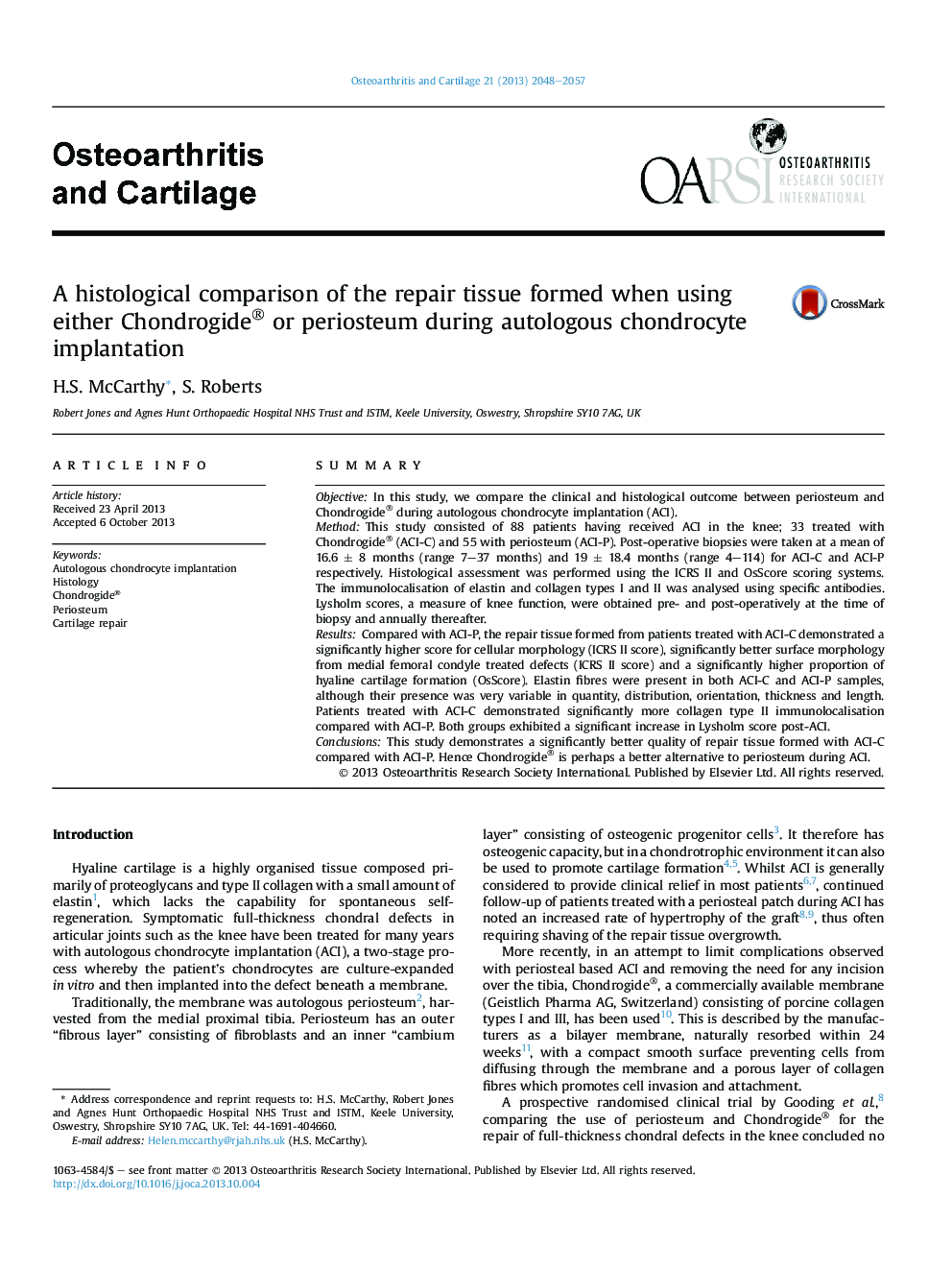| Article ID | Journal | Published Year | Pages | File Type |
|---|---|---|---|---|
| 3379468 | Osteoarthritis and Cartilage | 2013 | 10 Pages |
SummaryObjectiveIn this study, we compare the clinical and histological outcome between periosteum and Chondrogide® during autologous chondrocyte implantation (ACI).MethodThis study consisted of 88 patients having received ACI in the knee; 33 treated with Chondrogide® (ACI-C) and 55 with periosteum (ACI-P). Post-operative biopsies were taken at a mean of 16.6 ± 8 months (range 7–37 months) and 19 ± 18.4 months (range 4–114) for ACI-C and ACI-P respectively. Histological assessment was performed using the ICRS II and OsScore scoring systems. The immunolocalisation of elastin and collagen types I and II was analysed using specific antibodies. Lysholm scores, a measure of knee function, were obtained pre- and post-operatively at the time of biopsy and annually thereafter.ResultsCompared with ACI-P, the repair tissue formed from patients treated with ACI-C demonstrated a significantly higher score for cellular morphology (ICRS II score), significantly better surface morphology from medial femoral condyle treated defects (ICRS II score) and a significantly higher proportion of hyaline cartilage formation (OsScore). Elastin fibres were present in both ACI-C and ACI-P samples, although their presence was very variable in quantity, distribution, orientation, thickness and length. Patients treated with ACI-C demonstrated significantly more collagen type II immunolocalisation compared with ACI-P. Both groups exhibited a significant increase in Lysholm score post-ACI.ConclusionsThis study demonstrates a significantly better quality of repair tissue formed with ACI-C compared with ACI-P. Hence Chondrogide® is perhaps a better alternative to periosteum during ACI.
